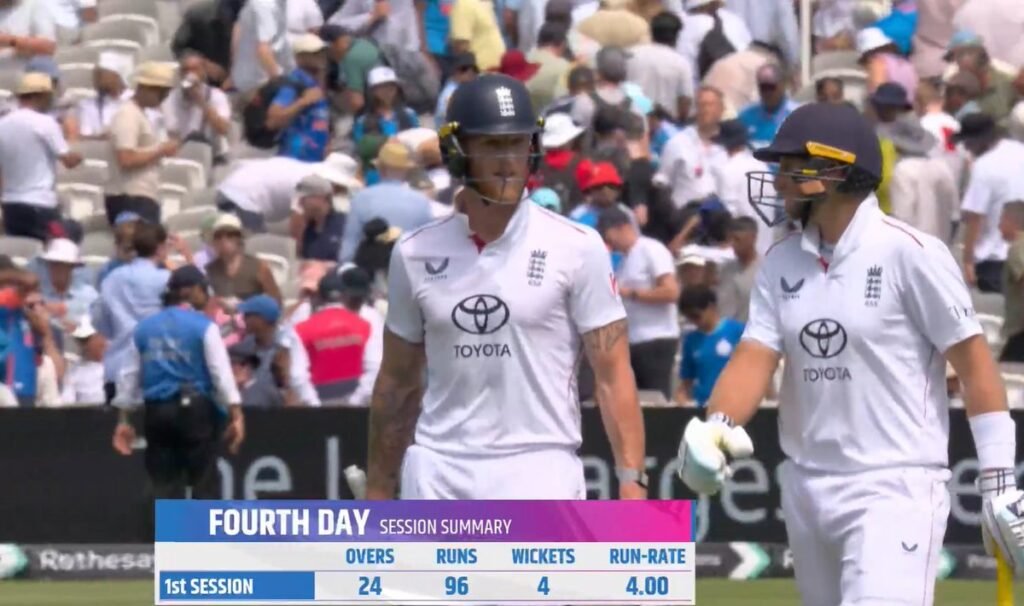
India’s third Test match against England at Lord’s reached a fever pitch as the visitors displayed both resilience and fire in a dramatic day’s play. The iconic venue witnessed a historic battle that swung back and forth with a rare intensity. With both teams having scored exactly 387 in their first innings—a statistical anomaly in Test cricket—Day Four’s action was packed with drama, emotional outbursts, and critical performances that set the stage for a nail-biting finish.
The Indian side entered the session with renewed focus. England had resumed their second innings under pressure and were soon subjected to India’s sharp bowling attack. Washington Sundar was the star of the session, delivering an inspired spell of off-spin that dismantled the middle order. He picked up four wickets, including the vital scalps of Joe Root and Jamie Smith. The bounce and drift he extracted from the surface were reminiscent of classic Lord’s spin spells, especially given the overcast conditions and patchy pitch. Jasprit Bumrah provided solid support, bowling a probing line that kept England’s batters pinned on the back foot, while Mohammed Siraj’s reverse swing troubled the lower order. England were bundled out for 192, leaving India with a target of 193.
The match, however, took another twist when India came out to bat. The opening partnership crumbled almost immediately. Yashasvi Jaiswal was dismissed for a duck, caught behind off a delivery that shaped away late. Karun Nair didn’t last long either, falling to an inswinger that trapped him plumb in front. The biggest blow came when skipper Shubman Gill, who had been involved in a heated exchange earlier in the day with Zak Crawley, was caught behind attempting a loose drive. The tension between the two had added to the emotional charge on the field, and Gill’s frustration was evident as he walked back.
England’s bowlers, particularly Brydon Carse and Ben Stokes, sensed a shift in momentum. Carse bowled with zip and accuracy, and Stokes—fired up as ever—delivered a hostile short-ball spell that accounted for nightwatchman Akash Deep just before stumps. India ended the day at 58 for 4, with KL Rahul remaining unbeaten on 33. His calm presence was perhaps the only reassurance for India fans, who had just seen a relatively modest chase suddenly turn treacherous.
Throughout the session, the Lords crowd was treated to classic Test cricket theatre. The pitch, now showing signs of wear, began to offer inconsistent bounce and turn. This played into the hands of both sides—India’s spinners earlier, and England’s seamers later. The field placements were aggressive, catches flew to the cordon, and tempers flared. Every single run was fought for, every wicket celebrated with intensity. Even a minor delay in play, caused by Crawley’s time-wasting tactics, escalated into a confrontation, underlining the high stakes and raw nerves on both sides.
India’s now requires 135 runs with six wickets in hand, and KL Rahul’s role becomes even more crucial. With Ravindra Jadeja still to bat, and the long tail behind, India cannot afford another collapse. England, meanwhile, will come hard in the morning session, hoping the early conditions work in their favour and a few quick wickets could turn the tide.
This Test match has already provided a spectacle of strategy, skill, and character. The rare occurrence of both teams scoring identical totals in their first innings only adds to its historical significance. More importantly, the balance India’s the contest has turned it into a classic Test—one that will be remembered for the tension it generated and the individual performances that illuminated each session.

